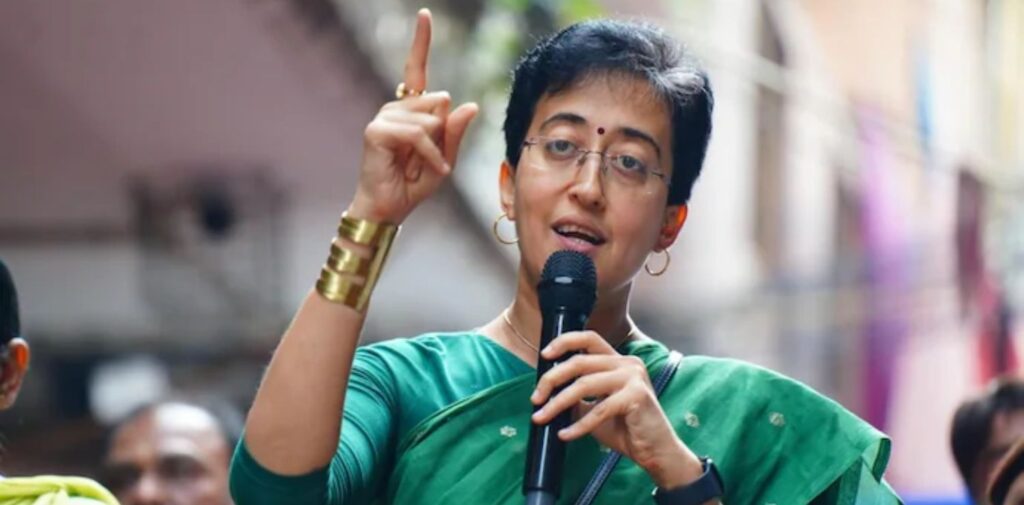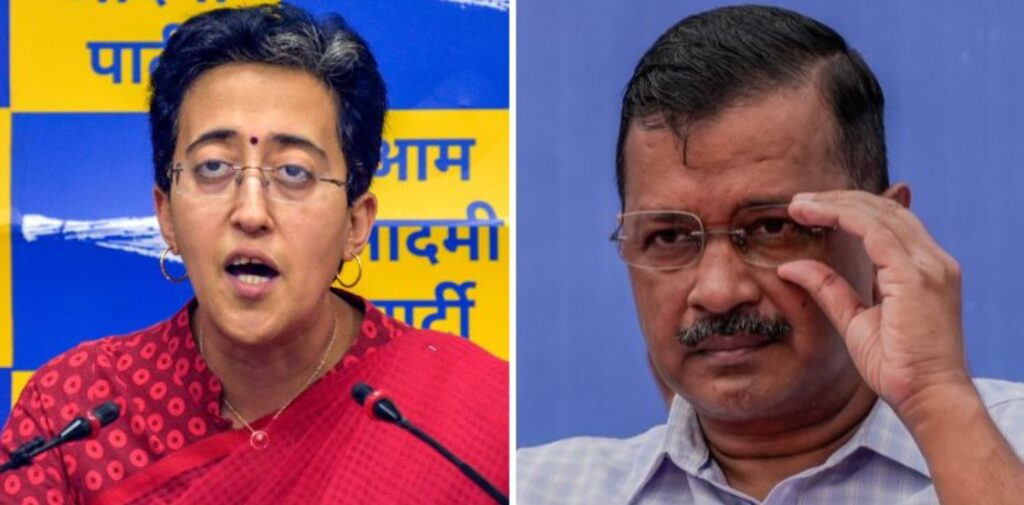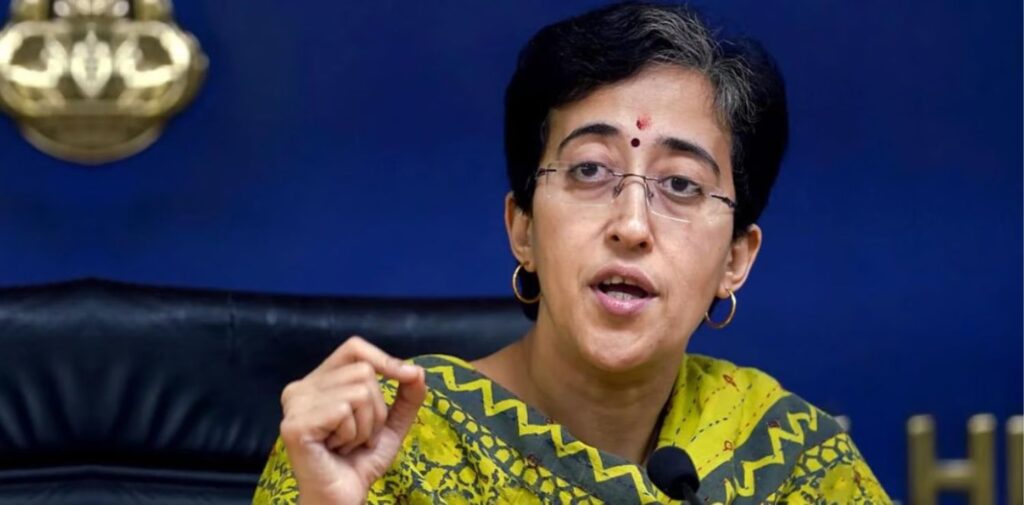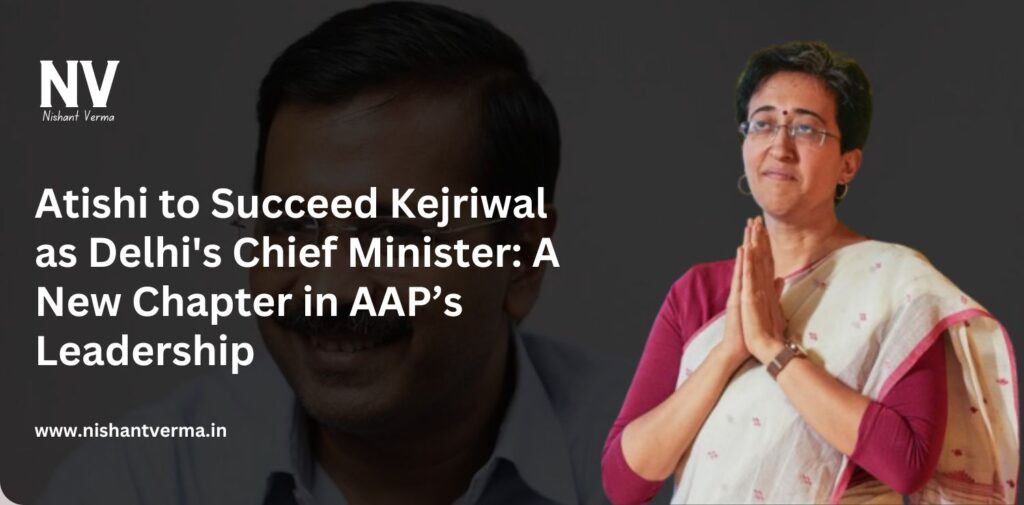The Aam Aadmi Party (AAP) has entered a significant phase of transition with the appointment of Atishi Marlena Singh as the new Chief Minister of Delhi. This decision comes after the party’s legislative meeting, where Atishi, a seasoned politician and key figure in Kejriwal’s government, was chosen unanimously to succeed Arvind Kejriwal. This marks a major milestone in Delhi’s political landscape, as she becomes the second woman to serve as Delhi’s Chief Minister after Sheila Dikshit, setting the stage for a fresh approach under AAP’s governance.
AAP’s Transition of Power
Arvind Kejriwal, who has held the Chief Ministerial position since 2015, announced his resignation amidst ongoing legal battles related to the controversial liquor policy case, which also implicated his deputy, Manish Sisodia. His resignation, submitted to the Lieutenant Governor, ends a prominent era of governance in Delhi, where AAP focused on reforms in education, healthcare, and public welfare.
Atishi’s rise within the party has been remarkable, particularly given her strong leadership during times of crisis, such as Kejriwal’s arrest in connection with the liquor policy case. With 14 key portfolios under her charge, including education, finance, public works, and power, her administrative competence was evident long before her nomination.
Who is Atishi?
Atishi is widely known as one of the most educated and progressive faces of AAP. A Rhodes Scholar, she earned her academic credentials from prestigious institutions like St. Stephen’s College in Delhi and the University of Oxford. Before joining politics, she had an extensive career in education and public policy, even spending years working on grassroots educational initiatives in rural Madhya Pradesh.

Atishi’s journey with AAP began during the party’s early days when she was instrumental in drafting its manifesto for the 2013 Delhi elections. She was an advisor to Manish Sisodia, helping design the transformative ‘Happiness Curriculum’ and the ‘Entrepreneurship Mindset Curriculum’ for Delhi government schools. These initiatives were critical in positioning AAP as a party that prioritizes the holistic development of students beyond academic achievement.
A Central Role in Education and Governance
Among her many roles, she is handling of Delhi’s education system stands out. Her work in revolutionizing government schools by improving infrastructure, modernizing curricula, and focusing on students’ emotional well-being earned her widespread recognition. As Education Minister, she was also responsible for one of AAP’s flagship programs, which highlighted the party’s governance style—focused on delivering tangible improvements in the lives of citizens.
Apart from her contributions to education, she holds several other high-profile portfolios, including finance and public works. Her efficient handling of these ministries further solidified her stature within AAP and her readiness to take over the reins from Kejriwal.
Kejriwal’s Legacy and Atishi’s Challenges
Kejriwal’s tenure as Delhi’s CM remembered for its focus on the common man’s issues—whether it was providing free electricity, improving healthcare facilities, or enhancing public education. Under his leadership, AAP grew from a fledgling party to a significant political force in Delhi. His anti-corruption stand and emphasis on good governance resonated with the urban middle class and the economically weaker sections.

However, the controversies surrounding his government, including the liquor policy case and internal party disputes, have cast a shadow on AAP’s image. Atishi’s appointment represents an opportunity for the party to move past these controversies and focus on governance.
Yet, Atishi faces considerable challenges. The upcoming Delhi Assembly elections, expected in late 2024, will test her leadership skills. She will need to consolidate the party’s achievements while addressing the criticisms leveled against AAP, particularly on matters of transparency and governance. Moreover, she must navigate Delhi’s complex relationship with the central government, which has often been a source of friction during Kejriwal’s tenure.
Atishi’s Political Appeal
Atishi’s urban, progressive persona makes her a valuable asset for AAP, especially as the party seeks to consolidate its hold over Delhi’s middle-class electorate. Her educational background and international experience appeal to urban voters, who are keen on competent and educated leadership. Moreover, her grassroots work, particularly in education, resonates with a wide swath of voters who have benefited from AAP’s welfare schemes.

Her tenure as Delhi’s first female Chief Minister since Sheila Dikshit is likely to be marked by her brand of governance—focused, pragmatic, and reform-oriented. She brings to the table a deep understanding of policy, an unwavering commitment to public service, and a strong will to continue the reforms set in motion by her predecessors.
The Road Ahead for AAP
As Atishi takes over as Chief Minister, AAP will have to rally behind its new leader while preparing for the challenges ahead. The party’s success in the next election will depend heavily on her performance in office. Her ability to maintain the party’s existing voter base while attracting new supporters will be crucial. Additionally, she must ensure that the party remains united in the wake of internal challenges, including those related to the legal issues faced by top AAP leaders like Kejriwal and Sisodia.
The political landscape of Delhi is now entering a new era, with Atishi at the helm. Her appointment signifies both continuity and change—a new chapter for AAP, one that builds on its past successes while looking ahead to future challenges.
In summary, Atishi’s appointment as Delhi’s Chief Minister is a historic moment for AAP and Delhi’s political environment. Her leadership will be closely watched as the city prepares for its next election, with her tasked with not only carrying forward Kejriwal’s legacy but also crafting her vision for Delhi’s future.



